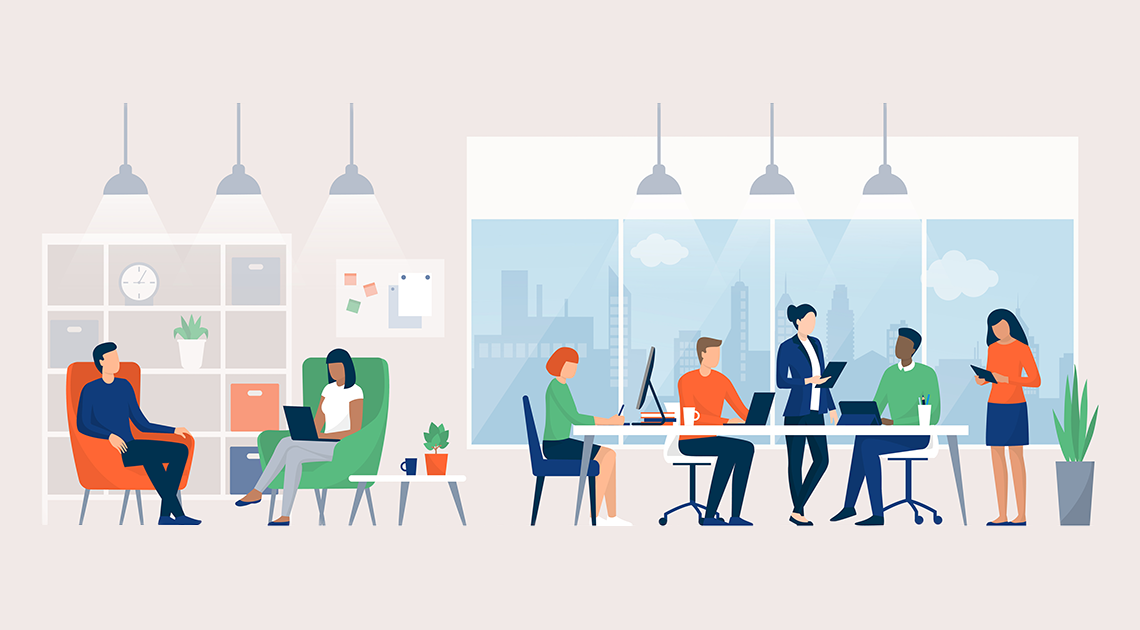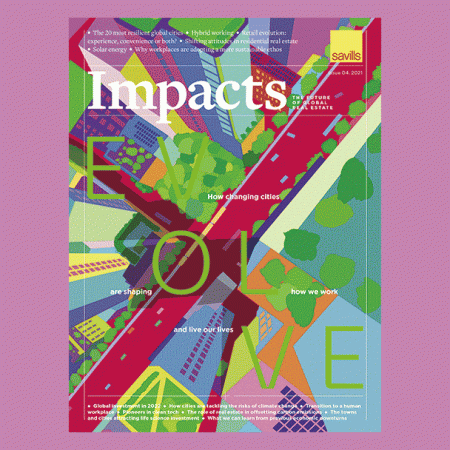Providing affordable and interesting workspaces is crucial to ensuring that cities are at the forefront of the tech and creative industries, and therefore a draw for national and international talent.
Cheaper fringe offices have historically helped generate economic growth and jobs, providing space for entrepreneurs and creatives in the early stages of their businesses. However, the first rung on the property ladder for many start-ups has now been removed as costs have escalated in most key global cities over the years. The Covid-19 pandemic has also normalised home-working in many locations, meaning that start-ups, creatives and entrepreneurs need incentives to return to cities.
This is not just an issue for the businesses looking for affordable space: cities across the world benefit from the activity and vibrancy that start-ups, the arts and social enterprise tenants have brought into areas that were once dilapidated and un-loved. However, these are often the first to be pushed out by increasing rents, as developers, investors and higher-paying occupiers become attracted by the very vibrancy that these tenants have helped to build.
Berlin for example has thrived due to its cheap rents (despite fast rent increases, Berlin remains on average 30% lower than London or New York), creative atmosphere, and support system for local artists. The creative sector now accounts for 10% of Berlin’s economy, having created about 67,000 jobs since 2009.
How are global cities addressing the need for affordable workspaces ?
The creation of affordable workspaces requires joined up thinking and a willingness of public and private sectors to work together. By connecting with the community, embracing its heritage, nurturing and celebrating local skills, craft and culture that is when an area will see authentic social and economic value. There are many different approaches from cities around the world:
Repurposing the existing urban fabric
Repurposing older buildings that are already in the right location is often a more sustainable and cost effective way to develop affordable workspace. Leaving buildings and land empty is also costly in terms of security and property taxes, and represents a huge financial and social loss for both the economy and local community. Unused dilapidated spaces which are waiting to be re-developed could be transformed through ‘meanwhile uses’ which can bring huge benefits and social value to an area.
‘Meanwhile’ use of space prior to development is a good opportunity for providers to test their concept, to provide a service to the local community, and to brand a site while it is undergoing redevelopment.
In London alone there is an estimated 6.5 million square metres of otherwise empty commercial space which could be utilised, and in July 2019, a record high of 10.3% of shops in the UK sat unused. London has started to offer more and more of these types of spaces in schemes such as the Old Baths in Hackney and the Peckham Levels in Southwark, both creative and interesting spaces which connect with the local community. This kind of temporary and ‘meanwhile spaces’ are also on the rise across Europe. More vacant buildings, plots and unutilised spaces are serving as temporary sites for co-creative workspaces, unlocking a multitude of innovative cultural, social and entrepreneurial potential. Some of the tenants fostered in these spaces may even grow to a size that they can then take permanent space in the final schemes, albeit developers and landlords will need to work with them to ensure rents remain affordable, or support them in finding other appropriate space elsewhere.
Lisbon’s signature project ‘Startup Lisboa’ has led projects to rehabilitate old buildings, and revamp derelict areas into creative districts. It provides entrepreneurs with affordable workspaces, as well as a support structure; it mentors new businesses, fostering strategic partnerships and creating an innovative community of knowledge-sharing. Thriving projects in the Danish city of Aarhus and Philadelphia in the US, where it’s called “temporary urbanism” have also hit the headlines. In Paris, the old Saint-Vincent-de-Paul hospital (disused for years now) has hosted ‘Les Grands Voisins’ since 2015 – creating a community where people can meet, and socialise, inhabited by artists and entrepreneurs.
Further afield, Australia is also recognising the importance of re-using older buildings. The Government, seeing the value in these artists and entrepreneurs, has embarked on a long-term plan to evaluate and change building regulations to help knock down regulatory barriers and find new ways to create creative spaces.
Ultimately, investment in social and cultural infrastructure via providing affordable workspaces will become even more important post-pandemic with community and collaboration becoming key ingredients. Proactive local governments which recognise existing resources and create mechanisms to support new ideas will have a direct impact on the local area, job creation and the environment.
We need to see global cities continue to address the need for more ‘affordable’ workspaces. There is an opportunity here for canny investors to repurpose older buildings that are already in the right places in a sustainable and cost-effective way to deliver offices which foster innovation and growth.



